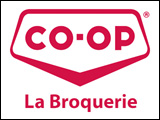For some people, the coming of spring – the final snow melt, warm air fragrant with aroma of blossoms, bird song – is a time to dread. It seems without fail, from eight to 10 percent of the population experiences symptoms such as a runny nose, itchy eyes, sneezing and perhaps swollen nasal passages during a season that has most folks rejoicing. This is a condition known as allergic rhinitis, and is triggered by pollen grains – released by shrubs, trees, grasses and weeds as they seek to propagate their species – which enter the nose and mouth.
To be clear, while spring with its sprouting plants and freshly mown grass is thought of as “allergy season,” early fall – rife with floating dry plant particles and grain dust – is also prime time for allergies. In a way, allergies are no respecter of season since people may, indeed, be sensitive to any number of substances including mold, pets, household cleaners and of course, a wide variety of foods.
It bears pointing out that most of the substances that trigger allergies are in themselves totally innocuous. Why some people react by breaking out in rashes, sneezing and wheezing on breathing in pollen, for example, while others do not, is still a mystery. It seems women are more likely to have allergies than men, and those under age 40 are more prone. Allergies appear to carry a strong genetic link – your chances of developing one or more allergies is greater if a parent had them, more so if both parents had problems. People who have asthma or another lung condition will more likely suffer from an allergy which makes sense since the respiratory system is already compromised.
Foreign invaders
What happens in a allergic situation? While the immune system does an amazing job in most cases to protect the body from dangerous foreign invaders – harmful pathogens and bacteria and the like – in hypersensitive people, it makes mistakes and identifies harmless substances such as pollen grains, animal dander or dust mites as harmful, and in the effort to expel these invaders, histamines (which the body uses to fight infections) are released which result in runny noses, sneezing and the like.
There are many ways people who suffer from pollen allergies or so-called spring allergies seek relief. One of the main ones is to ingest any one of the panoply of pills and capsules, cough suppressants and nasal decongestants available from drugstores, which do offer some mitigation of symptoms, but sometimes lead to side effects such as drowsiness or mild mental or physical impairment.
A substance known as quercetin may be worth a try. This substance belongs to a class of nutrients known as bioflavonoids – pigmentary compounds which give fruits and vegetables their blue and red colours. It has been thought quercetin’s most important role is as an antioxidant – having the ability to neutralize free radicals, cells that that have been oxidized to the extent they have become harmful to other cells in the body. More recently, it has been discovered that quercetin is useful in treating allergies and asthma.
First, it is a powerful anti-inflammatory, keeping the lungs, nasal passages and eyes from swelling, the “normal’ reactions of people allergic to pollen when they come in contact with the tiny air-borne grains. Secondly, quercetin is a potent anti-histamine that prevents the release of itchy chemicals that make the nose run and the eyes water.
One of many bioflavonoids
Quercetin is only one of many bioflavonoids known to scientists, but it appears to be the one with the highest degree of anti-allergy activity. Not only does it offer relief from allergens, it has been shown to protect the stomach from ulcer disease and gastric stress which are sometimes aggravated by anti-allergy medications.
It is of interest to note that quercetin is more effective when combined with the intake of vitamin C, a natural anti-histamine and anti-inflammatory (and a nutrient which plays other vital roles in the body such as strengthening the immune system and repair of body tissues). Many fruits and vegetables which are a rich source of quercetin are also high in vitamin C; these include various peppers – both hot and sweet – blueberries, onions, tomatoes, cherries, apples (including apple sauce), red grapes and cranberries (including juice). Other common foods high in quercetin – but ones not eaten in great quantities at a time – are buckwheat, chives, cocoa powder, dill weed, tarragon and watercress.
While it is a good idea to eat foods high in quercetin since it is an antioxidant, if taking it to mitigate allergic reactions to pollen and other spring allergens, you might wish to ingest it in capsule form. Quercetin is also an ingredient in a vitamin C product in the form of calcium ascorbate – made when ascorbic acid or vitamin C is buffered with calcium using a water-based process.



